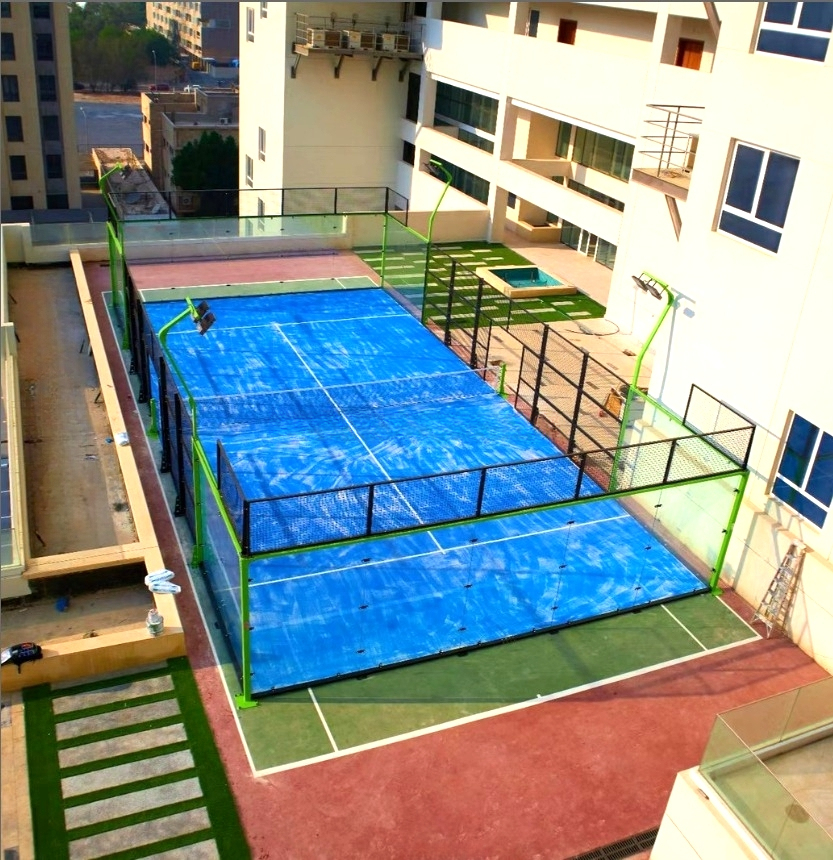Transforming Communities Through Modern Sports Facilities
The rising popularity of padel has sparked a revolution in community sports infrastructure worldwide. A padel court installation represents more than just a new sporting venue – it's becoming a catalyst for social interaction, wellness, and neighborhood vitality. As communities seek innovative ways to bring people together, this fast-growing racquet sport offers a unique solution that appeals to players of all ages and skill levels.
The social nature of padel, combined with its relatively gentle learning curve, makes it an ideal choice for community planners looking to enhance local recreational facilities. Unlike traditional tennis courts, a padel court creates an intimate setting that naturally encourages interaction and relationship building among players.
Design and Implementation Considerations
Location Planning and Space Requirements
Selecting the optimal location for a padel court requires careful consideration of several factors. The standard dimensions for a padel court are 20 meters by 10 meters, with additional space needed for safe player movement and spectator areas. Urban planners and community developers should evaluate existing recreational spaces, considering factors like accessibility, parking availability, and proximity to residential areas.
Weather protection and lighting systems also play crucial roles in maximizing court usage throughout different seasons and times of day. Modern padel court designs often incorporate covered areas and efficient drainage systems to ensure year-round playability.
Technical Specifications and Materials
The construction of a high-quality padel court involves specific technical requirements to ensure safety and optimal playing conditions. The playing surface typically consists of synthetic turf filled with silica sand, providing excellent traction and comfort for players. The distinctive glass walls, a defining feature of padel courts, must meet strict safety standards while maintaining transparency for spectator viewing.
Modern padel court installations often include advanced features such as LED lighting systems, professional-grade artificial turf, and tempered glass panels. These elements contribute to both the durability and appeal of the facility, ensuring a long-term return on investment for communities.

Social Impact and Community Benefits
Fostering Intergenerational Connections
One of the most remarkable aspects of a padel court installation is its ability to bridge generational gaps. The sport's accessible nature makes it equally enjoyable for children, adults, and seniors, creating natural opportunities for cross-generational interaction. Communities with padel facilities often report increased social bonds between different age groups, as the sport provides a common ground for shared experiences.
Regular padel activities can lead to the formation of local clubs, tournaments, and social events that strengthen community ties. These gatherings become focal points for neighborhood interaction, extending beyond the court itself to create lasting social connections.
Health and Wellness Promotion
Installing a padel court demonstrates a community's commitment to public health and active living. The sport offers an excellent cardiovascular workout while being gentler on joints compared to many other racquet sports. This makes it particularly attractive to health-conscious individuals seeking sustainable fitness activities.
The presence of a padel court can inspire previously sedentary community members to engage in regular physical activity. The social aspect of the sport often serves as additional motivation for maintaining an active lifestyle, contributing to improved community health outcomes.
Economic and Property Value Impact
Real Estate Enhancement
The addition of a padel court to a community can significantly impact property values in the surrounding area. Modern home buyers increasingly prioritize access to recreational facilities, and the presence of trending sports amenities like padel courts can make neighborhoods more attractive to potential residents.
Real estate developers have begun recognizing padel courts as valuable assets in their property portfolios, often including them in new residential developments as premium features that differentiate their offerings in the market.
Local Business Opportunities
A padel court installation can stimulate local economic activity through various channels. From equipment sales and court maintenance to coaching services and tournament organization, the facility creates opportunities for small business development within the community.
The increased foot traffic generated by padel activities can benefit nearby businesses, particularly cafes, sports shops, and other retail establishments. This economic ripple effect contributes to the overall vitality of the community's commercial sector.
Frequently Asked Questions
What makes padel different from traditional tennis?
Padel combines elements of tennis and squash, being played on an enclosed court with glass walls that are part of the game. The scoring system is similar to tennis, but the court is smaller, and the balls can be played off the walls, making rallies longer and more accessible to players of various skill levels.
How much space is required for a padel court installation?
A standard padel court requires a minimum area of 20 meters by 10 meters for the court itself, plus additional space for safety margins and spectator areas. The total recommended area including all amenities is approximately 25 meters by 15 meters.
What is the typical return on investment for a community padel court?
While the initial investment in a padel court can be significant, communities typically see returns through increased property values, membership fees, court rentals, and enhanced community appeal. The social and health benefits, though harder to quantify, add substantial value to the community's quality of life.

